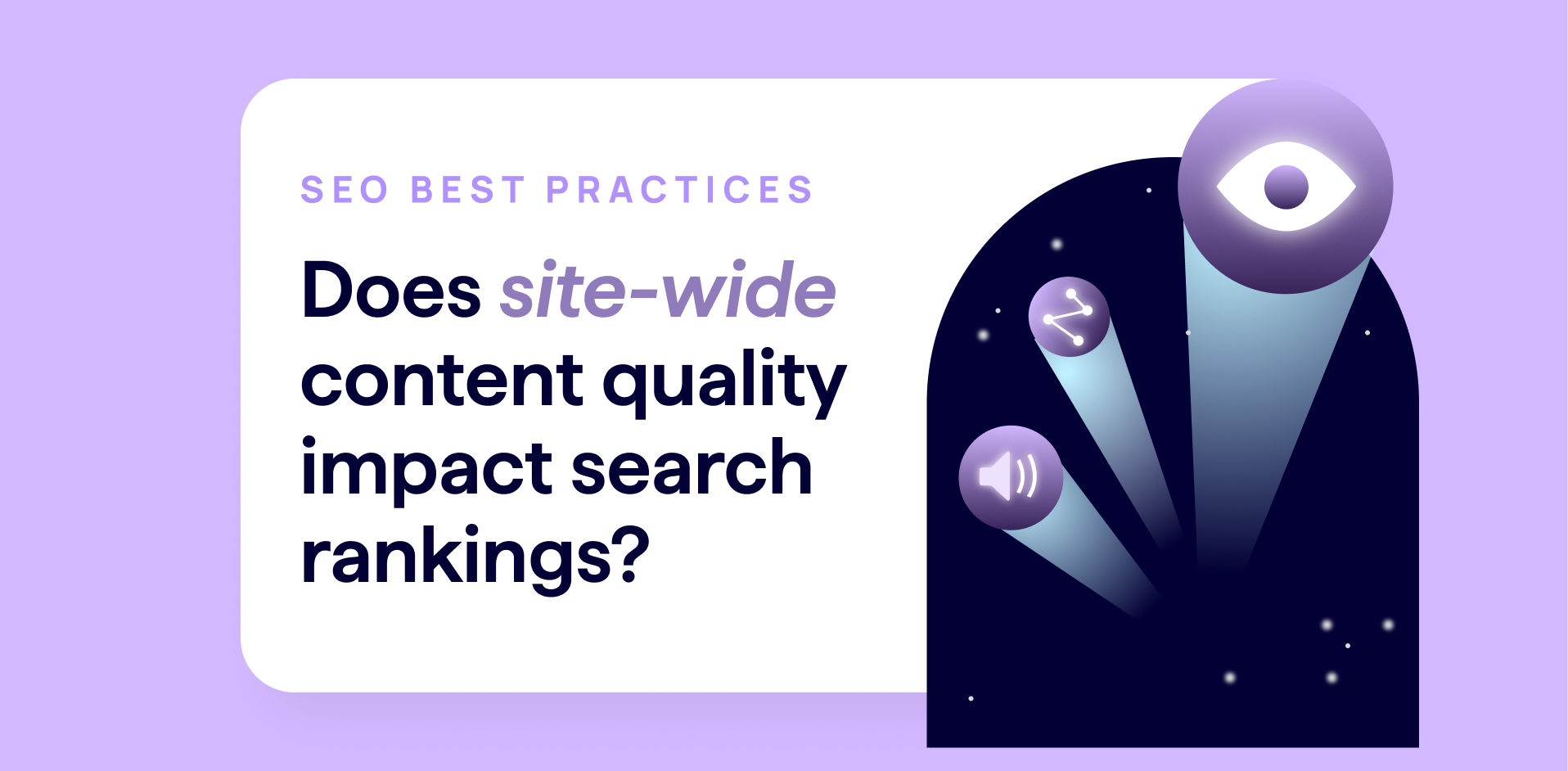For years, marketers have acknowledged and understood that SEO is important to their marketing strategy.
What’s less clear, however, is just how vital SEO is to achieve their goals, especially as the world moves increasingly online.
A 2019 study from BrightEdge, titled ‘Organic Search Improves Ability to Map to Consumer Intent,’ found that organic search was responsible for 53.3% of all site traffic. Post-COVID, that’s likely to be even higher.
Today, marketing leaders need to move beyond thinking that ‘SEO-ing’ a blog post or landing page is enough. To grow your brand’s online presence, improve customer experience, establish your brand as an authority within your industry, and drive greater ROI, more needs to be done.
SEO needs to be seen as a critical component of your marketing strategy – especially as we know that SEO has the highest ROI of all digital marketing channels.
So, what elements of SEO do you need to focus on to ensure you don’t end up falling behind your competitors?
Keyword research, traffic, and its impact on brand messaging
Keyword research needs to be a core focus within all marketing strategies.
Poor research can often lead to targeting high-volume keywords that are unrelated to your marketing strategy. These keywords may increase organic traffic overall, but that might not be the right traffic.
Because of this, doing keyword research well is not only critical to understanding the wider intent of a word or phrase that you want to target, but also to understand where users are focusing their attention and which words they associate with your product, service, or brand.
The importance of search intent
Search intent is a vital part of any SEO strategy. A keyword may be high-volume but its position in the marketing funnel may result in you missing your goals.
If a user isn’t ready to purchase but you are trying to serve them a page with a purchasing intent — for example, they’re searching for a ‘how-to’ or ‘what is’ page, and your page is a product page — you are less likely to capture them. The same applies when providing long-form thought-leadership when a customer is ready to buy.
Providing misaligned information makes it highly likely users will return to the search results page, losing a potential customer’s attention, and reducing the overall reach of your brand.
Focusing attention on keywords that matter
When conducting keyword research, you will typically see a volume associated with a keyword which indicates how many people are searching for that term every month.
This helps identify topic segments that are popular and ones that are less popular.
But this isn’t the only thing to consider. If you’re looking to shift the conversation or educate users on areas that would benefit your business you may want to research around the topic you want to promote and try to capture terms that are of relevant interest.
Ultimately, keyword research needs to be built around your marketing funnel, which as we know, is a core component of every marketing strategy. Failing to do this will ultimately lead to reduced conversions and diminishing brand value.
Using SEO to grow your brand authority
Appearing at the top of search results can only be a good thing for your brand. Consumers trust Google and are likely to see your pages ranking #1 as a sign of quality.
Exposure via organic search visibility can also expand your potential reach to new consumers that you wouldn’t otherwise target through paid campaigns.
Whereas paid search campaigns target specific keywords with high purchase intent, organic search tends to generate leads from a wider base via a longer-tail keyword set. Organic channels, whether through Google or Bing, also tend to have a high CTR.
Putting a robust SEO strategy in place will ultimately increase the size of your audience. Demographic features are rarely a feature in an organic keyword strategy that focuses on long-tail keywords.
Because of this, brand exposure has the potential to multiply exponentially, putting your brand in front of untapped audiences, and ultimately, achieving the holy grail of marketing: driving more conversions.
Even in the case where driving conversions isn’t your ultimate goal, a robust SEO strategy that focuses on technical health and content quality will attract more users through search.
This could, for example, allow you to get more eyes on your thought leadership content, increasing your brand authority, and setting up future campaigns to resonate more widely than they might’ve done in the past.
The importance of User Experience (UX)
One of the most consistent pieces of advice we get from SEO leaders like John Mueller (Webmaster Trends Analyst at Google) and Martin Splitt (Developer Relations at Google) is to give users what they want. As a marketer, this makes sense. If you give customers what they desire, they’re more likely to purchase your product or service.
Google’s advice to provide a positive user experience for your customers suggests your SEO goals and your marketing goals should naturally be aligned with your site experience (UX) team’s goals.
This goes beyond content and also speaks to new metrics Google is using to evaluate sites such as how much a page’s content shifts around as it’s being loaded.
These new ranking factors are in addition to behavior metrics Google uses — whether users navigate back to the Google search results page after visiting your site (bounce rate), and how long they stayed before clicking back (time on site).
Although these latter metrics are not direct ranking factors, they’re still important. If you can get people to stay on your site longer, they’re more likely to convert.
Getting your site UX right is by no means a simple undertaking, but by aligning UX and SEO goals in your marketing strategy, you’re much likely to rank higher, attract more customers, and increase return on investment.
Site architecture: enabling better site usability for customers and search engines
Your website should be easy to navigate to all users, regardless of which channel they ride in on. Imagine you’ve searched for a piece of content online, or clicked on a paid ad for a piece of content.
If the site architecture is poor, you’re less likely to explore beyond that piece of content to discover more about the brand, read more useful content, or find other products.
Poor site architecture also means that your customers’ page depth and time on site will be lower, which translates directly to less product and/or ad revenue.
All users, regardless of channel, are visiting the same website, even if they’re not all entering on the same page. Some users are front-door users who go directly to your site, while others, particularly those that come through organic or paid channels, go to specific landing pages.
But all users who continue their journey around the site will use the same site navigation, and the same architecture and the two should match as closely as possible.
This is as true for humans as it is for Googlebot, which crawls your website and makes inferences about topic categories based on site architecture and internal linking.
Any difficulties or inconsistencies and your users will leave the page they’re on.
In this instance, Googlebot will make inaccurate decisions about which of your content to serve to its users for which queries. This also naturally impacts how users experience your website, potentially leaving a negative impression of your brand, and subsequently reducing conversions.
A final point
Increasing conversions, building brand equity, and creating optimal user experiences are three of the most important focuses for marketing leaders today. But not all marketers understand how vital SEO is to these goals. Hopefully, this blog has gone some way to answering those gaps.
Ultimately, though, it’s about being smart. By better incorporating SEO into your wider marketing strategy, you’ll have a better chance of driving highly targeted traffic to your website, increasing conversions, opening up your brand to new audiences, and achieving a better return on investment.





